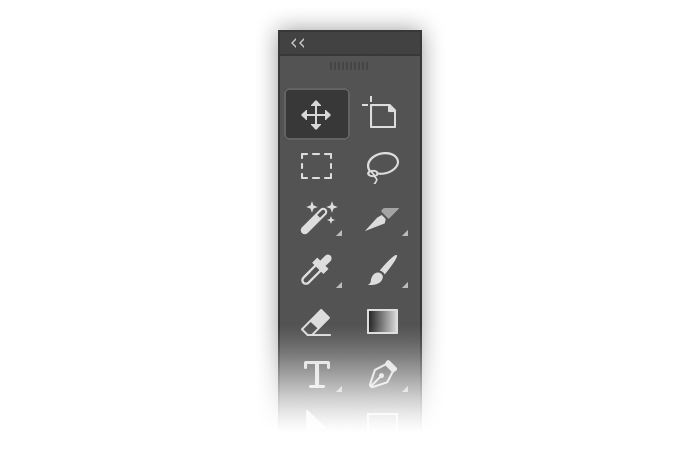The Importance of Play in Design Tools
By Kevin J. Lynagh
07 February 2017 • 3 minute read
Summary: While Ryan and I are working hard on Subform, I want to discuss something that one of our Kickstarter backers brought up: the importance of play.

In digital environments, play often occurs via direct manipulation. Like Piaget’s babies instinctively grasping objects, when we explore a new digital environment we instinctively move around the cursor and click on things to see what happens.
Well-designed software encourages such exploration in two ways.
First, it invites you to play by giving you shiny, interesting things to play with:

I’d bet that most of you learned Photoshop not by reading the manual, but by just trying out the different tools in the toolbar. Graphical interfaces invite exploration.
Second, usable software rewards you for exploring—it provides clear, immediate feedback that invites you further—and helps you learn the underlying rules of the system
Take resize handles, for example.
Clicking on an object makes resize handles appear (reward, invitation for further manipulation). Clicking and dragging a handle then provides the instant feedback of the blue outline (reward, invitation to start waving the cursor around like a goofball).

The sheer joy of swinging the resize handle around may encourage us to explore further—we may even discover that holding “alt” or “control” enables more complex manipulations like symmetric and aspect-ratio preserving resize:

These two dimensions of a software system—inviting play and rewarding it —are what help us discover and learn the rules of the system.
The example of dragging and resizing a rectangle with a mouse cursor is just one example of such play—it might feel pedestrian today, but it was groundbreaking in 1973 when it appeared in the Xerox Alto. (And it was still groundbreaking a decade later Apple featured it in the Macintosh.)
For a great tour of human-computer interface ideas (from back when computers were exciting), check out Alan Kay’s 1987 talk Doing with Images Makes Symbols.
And for more on computers and learning, see Seymour Papert’s Mindstorms. If you’ve ever played with Lego (or moved a turtle around your computer screen), you might already be familiar with Papert’s influential work.
As it turns out, direct manipulation is just one of many fascinating human-computer interaction ideas developed in the 1970s. We’re excited to be exploring more of these ideas as we bring Subform to life. Stay tuned.